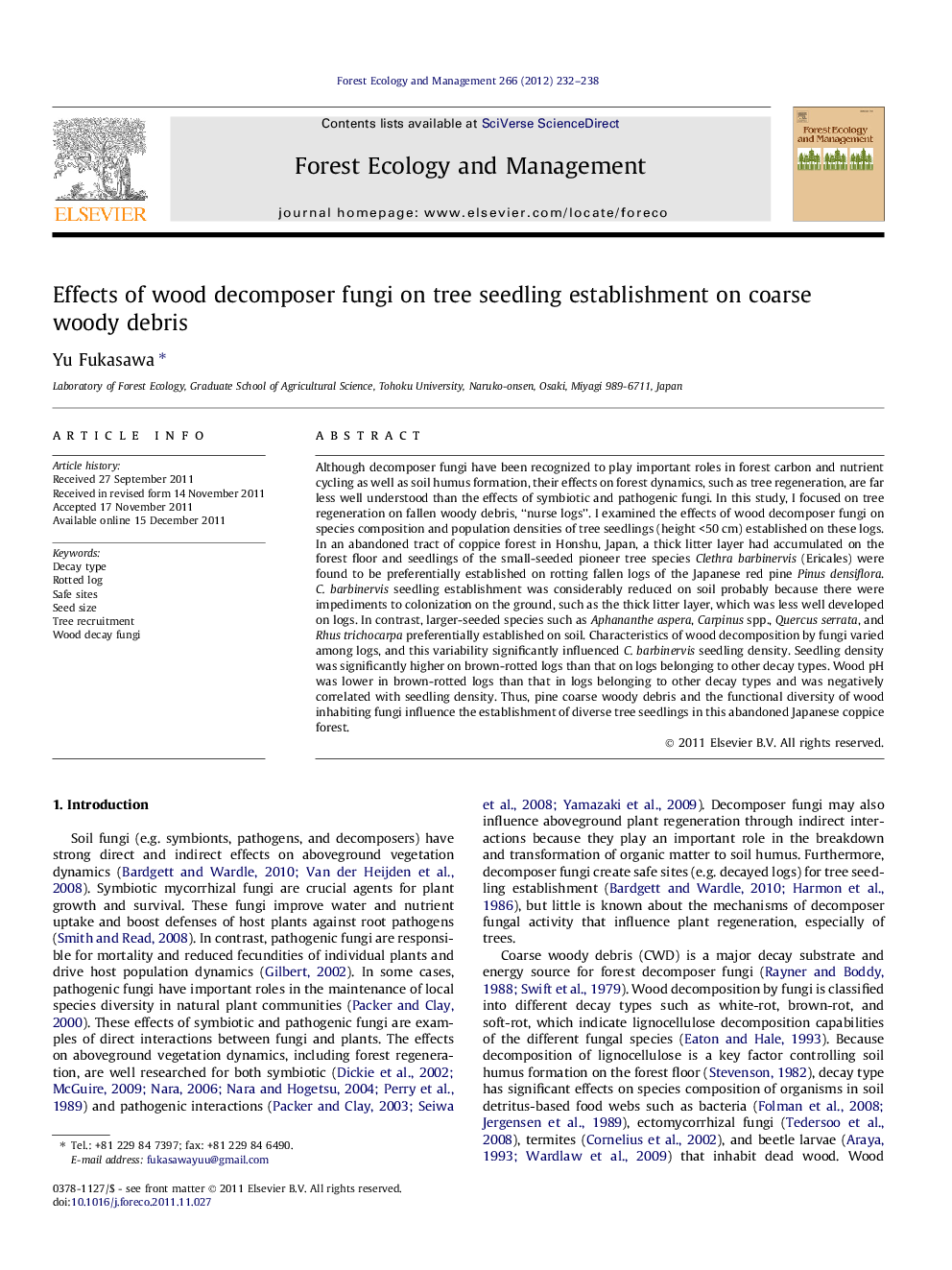| Article ID | Journal | Published Year | Pages | File Type |
|---|---|---|---|---|
| 87718 | Forest Ecology and Management | 2012 | 7 Pages |
Although decomposer fungi have been recognized to play important roles in forest carbon and nutrient cycling as well as soil humus formation, their effects on forest dynamics, such as tree regeneration, are far less well understood than the effects of symbiotic and pathogenic fungi. In this study, I focused on tree regeneration on fallen woody debris, “nurse logs”. I examined the effects of wood decomposer fungi on species composition and population densities of tree seedlings (height <50 cm) established on these logs. In an abandoned tract of coppice forest in Honshu, Japan, a thick litter layer had accumulated on the forest floor and seedlings of the small-seeded pioneer tree species Clethra barbinervis (Ericales) were found to be preferentially established on rotting fallen logs of the Japanese red pine Pinus densiflora. C. barbinervis seedling establishment was considerably reduced on soil probably because there were impediments to colonization on the ground, such as the thick litter layer, which was less well developed on logs. In contrast, larger-seeded species such as Aphananthe aspera, Carpinus spp., Quercus serrata, and Rhus trichocarpa preferentially established on soil. Characteristics of wood decomposition by fungi varied among logs, and this variability significantly influenced C. barbinervis seedling density. Seedling density was significantly higher on brown-rotted logs than that on logs belonging to other decay types. Wood pH was lower in brown-rotted logs than that in logs belonging to other decay types and was negatively correlated with seedling density. Thus, pine coarse woody debris and the functional diversity of wood inhabiting fungi influence the establishment of diverse tree seedlings in this abandoned Japanese coppice forest.
► Relationship between seedlings on nurse logs and wood decay type was focused. ► Seedlings of Clethra barbinervis preferentially established on fallen logs. ► Seedling density of Clethra was higher on brown-rotted logs than other decay types. ► Wood pH had negative correlation with seedling density of Clethra. ► Functional diversity of wood decay fungi affects seedling establishment on logs.
